In our Little World class here at High Trails we discuss three types of decomposers: Bacteria, Fungi, and Invertebrates/Scavengers. We do in fact find all sorts of interesting critters, both growing and crawling around the San Bernardino National Forest. However, our mountains are dry, arid, and have few year round water sources.
This means there is a shortage of research opportunities for one of my personal favorite classes of invertebrates: Aquatic Insects.
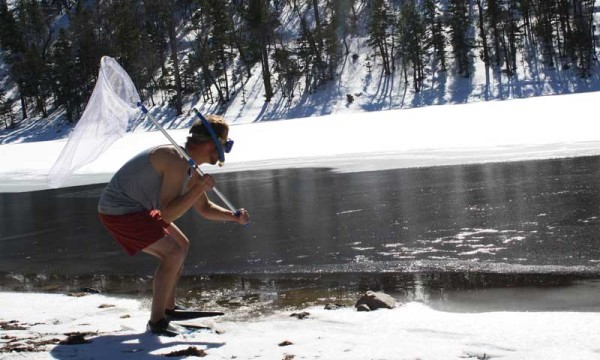 Having been an avid fly fisherman for many years, I was quite familiar with these guys and replicas of them, particularly stoneflies (Plecoptera), mayflies (Ephemeroptera), and caddisflies (Trichoptera). It wasn’t until teaching Little World that I truly understood the complete niche that Aquatic Insects have in an ecosystem. So, let’s take a look.
Having been an avid fly fisherman for many years, I was quite familiar with these guys and replicas of them, particularly stoneflies (Plecoptera), mayflies (Ephemeroptera), and caddisflies (Trichoptera). It wasn’t until teaching Little World that I truly understood the complete niche that Aquatic Insects have in an ecosystem. So, let’s take a look.
What are aquatic insects?
Have you ever been on a lake shore or by a river just as the sun is setting and hundreds of flying insects suddenly appear out of the ripples in the water? If so, congratulations! You have just witnessed an emergence, the process of a nymph rising to the water’s surface where its exoskeleton is shed and the nymphs transforms into a dun.
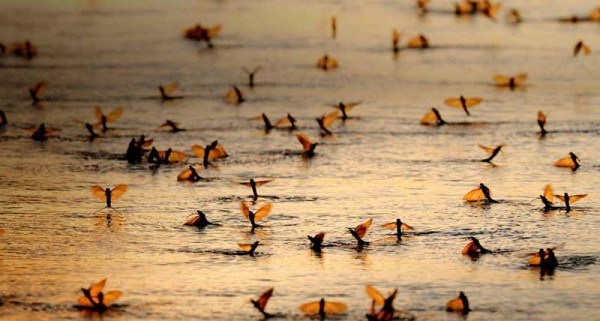 The transformation (dun) of these arthropods into a wind-borne invertebrate is in fact similar to a caterpillar’s transformation to a butterfly. Like caterpillars, these guys didn’t just hatch from eggs. As a matter of fact, they have spent the majority of their life under water (up to 3 years) as larvae/pupa/nymphs using gills to obtain dissolved oxygen in the water. This Metamorphosis that you are witnessing is the final stage of their life cycle.
The transformation (dun) of these arthropods into a wind-borne invertebrate is in fact similar to a caterpillar’s transformation to a butterfly. Like caterpillars, these guys didn’t just hatch from eggs. As a matter of fact, they have spent the majority of their life under water (up to 3 years) as larvae/pupa/nymphs using gills to obtain dissolved oxygen in the water. This Metamorphosis that you are witnessing is the final stage of their life cycle.
Reproduction is now their only purpose on this earth; thus, they have no mouth for eating, just reproduction organs.
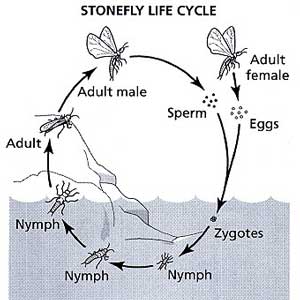 Typically, within 24 hours of reaching maturity, the adult flies will return to the body of water to mate. At this point the male’s life is complete. Once the female lays her eggs, she too will expire. Up to 8,000 eggs may be laid at a time at which point snails and caddis larva will feed on them.
Typically, within 24 hours of reaching maturity, the adult flies will return to the body of water to mate. At this point the male’s life is complete. Once the female lays her eggs, she too will expire. Up to 8,000 eggs may be laid at a time at which point snails and caddis larva will feed on them.
The surviving eggs will hatch in a matter of days of being laid; and at this point, the larva will take up residency on the gravel river bottom starting the next life cycle.
Aquatic Insects and Water Quality
Aquatic insects are probably of most value to scientists for determining water quality. In fact, one study suggests that “aquatic insects are the group of living things used most commonly for monitoring the health of aquatic environments.” 1 For example, the abundance, or lack there of, of these insects is a good indicator of the particular lake or stream’s water quality.
 One study in particular that has been closely monitored through the years is that of Lake Erie. Although still not at great levels, one can find many more bugs today in Lake Erie and the Detroit River than say in the 1960’s. 2
One study in particular that has been closely monitored through the years is that of Lake Erie. Although still not at great levels, one can find many more bugs today in Lake Erie and the Detroit River than say in the 1960’s. 2
Because of this improvement, Dr. Seuss has since removed the line: “They will walk on their fins and get woefully weary in search of some water that isn’t so smeary. I hear things are just as bad in Lake Erie.” that was in his early editions of The Lorax.
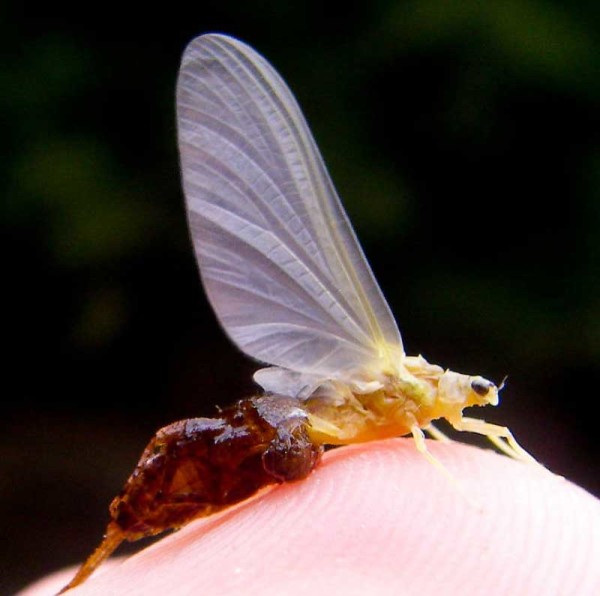 Aquatic Insects are Decomposers
Aquatic Insects are Decomposers
According to the National park Service, we can break down Aquatic Insects feeding habits into the following four categories. 3
- Shredders: Shred and chew leaves and bark (stoneflies, caddisflies, and crane flies)
- Collector-Gatherers: Collects (gathers) or filters primarily detritus (mayflies, stoneflies, midges, caddisflies, and blackflies) This is useful because it helps to keep the water clear enough for light to penetrate where algae and other plants are growing on the bottom. Furthermore, as the soft bottom sediments mix as burrowing takes place in search of food, oxygen mixes from the water into the bottom thus making the humus healthier for organisms.
- Scrapers: Scrapes and grazes biofilm, diatoms, and algae off exposed surfaces (mayflies and caddisflies) This layer of algae, which produces much oxygen and food for other organisms, is more productive if it is kept thin by the grazing of aquatic insects and other invertebrates.
- Predators: Attacks and engulfs other insects and macroinvertebrates (stoneflies, mayflies and caddisflies).
The predators are equally as important as the decomposers because they reduce the numbers of other invertebrates and help keep a balance among the different kinds of organisms and the food that is available.
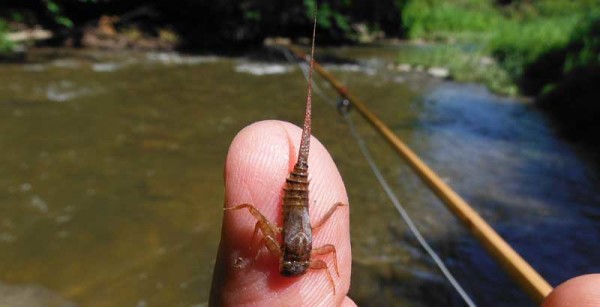 Aquatic Insects as Prey and Food
Aquatic Insects as Prey and Food
Finally, the total biomass of these creatures directly correlates with the prosperity of insectivores in their surrounding ecosystem (fish, frogs, birds, water beetles and dragonflies).
So, the next time you find one of these guys buzzing around you on an early summer’s evening, please don’t swat it. They don’t have mouths, so will not bite. And they play an important role in our environment. Aquatic Insects are another amazing organism we can share with our students at High Trails.
At High Trails Outdoor Science School, we literally force our instructors to write about elementary outdoor education, teaching outside, learning outside, our dirty classroom (the forest…gosh), environmental science, outdoor science, and all other tree hugging student and kid loving things that keep us engaged, passionate, driven, loving our job, digging our life, and spreading the word to anyone whose attention we can hold for long enough to actually make it through reading this entire sentence. Whew…. www.dirtyclassroom.com

Comments are closed.